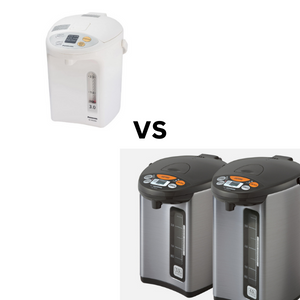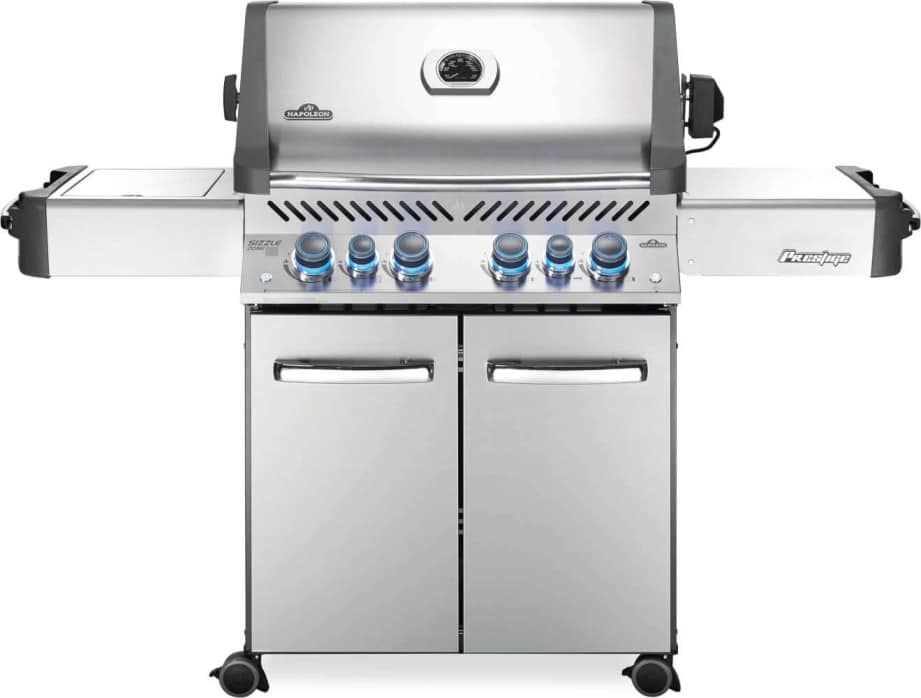If you’re in the market for a new dishwasher, you may be wondering whether to go with a General Electronics or KitchenAid model. Both brands offer high-quality dishwashers with various features to suit your needs.
We have chosen two popular models by each brand and compared their features to help you decide which one to buy.
We have chosen GE Profile Series Dishwasher Model PDT145SGLWW with a price of almost 900 $.
The KitchenAid Dishwasher we had chosen is from the DBA series, and Model no is KDTE104KPS. Its price is also near to 1000 dollars.
Comparison Table
| Feature | GE profile | KitchenAid |
| Brand | GE | KitchenAid |
| Series | Profile | DBA |
| Model | PDT145SGLWW | KDTE104KPS |
| Certification | NSF + Energy Star | Energy Star |
| Dimensions (H*W*D) | 32 1/2″-23 1/2″- 17 3/4″ | 33- 5/8”- 23-7/8”- 26-3/4” |
| Weight | 71 Lbs | 150.00 lbs |
| Color | White | Stainless steel |
| Interior Style | Stainless steel | Shining Stainless steel |
| Control Type | TouchPad | Push Button |
| Display Type | Electronic | Electronic |
| Capacity | 8 Place Settings | 12 place Settings |
| Cycle | 3(Auto + Light +Heavy) Wash | Optional 5-6 |
| Wash system | (Three-Level) Standard | (Four-Five) |
| Wash Arms | 2 | 3 |
| Bottle Wash | No | No |
| Cleaning Sensor | Yes | Yes |
| Water filtration | Yes | Yes |
| Water Heating | Yes | ______ |
| Hard Food Disposer | Yes | No |
| Stem Wash | No | ________ |
| Sound Level | 47dBA | 46 dBA |
| Wi-Fi | Optional | No |
| Automatic Temperature Control | Yes | Yes |
| Child Lock | Yes | Yes |
| Flood Control | Yes | Yes |
| Cutlery Tray | No | Yes |
| Pump | Dual Pump | Yes |
| Controlling Features | 3 Digit Countdown Display +1 Clean Light + 1 Sanitized Light Progress or Countdown Cycle + Audible End-of-Cycle Signal + Start And Reset Pad | 1 Light + sensors |
| Rack | 3 | 2 |
| Rack Features | 1x Piece Silverware Basket +1 Cell Cover +1 Plastic Utility Upper Shelf +Lower Fold-Down Tines + Tipped Tines Ball +Stem Safe | 1x Piece Silverware Basket + leak detection + Fold-Down self with stem holder + satin Glide(upper rack) |
| Fingerprint Resistance | ________ | Yes |
| ADA compliant | Yes | No |
| Ampere | 15 A | 20 A |
| Volts | 120v | 120v |
| Price | 900$ -1000$ | Above to 1000$ |
General Electronics has been manufacturing appliances for over 100 years. The company’s dishwashers are known for their durability and performance. On the other hand, KitchenAid has only been making dishwashers for about 30 years. However, the brand is owned by Whirlpool, which has a long history of making high-quality appliances.
Certification Comparison
General Electronics dishwasher is NSF and Energy Star certified, while KitchenAid Dishwasher is only Energy Star certified.
The National Sanitation Foundation (NSF) is an independent organization that tests products and certifies them to ensure they meet public health and safety standards. Energy Star is a government-backed program that promotes energy efficiency.
So, if you’re looking for a durable and reliable dishwasher, General Electronics is a good choice. If you’re interested in saving energy, KitchenAid is the way to go.
When it comes to features, both General Electronics and KitchenAid dishwashers offer similar options. Both brands offer models with stainless steel tubs, multiple wash cycles, and adjustable racks. Some of the top-of-the-line features offered by both brands include dual-zone washing, steam cleaning, and built-in water softeners.
Dimensions
Both General Electronics and KitchenAid dishwashers are available in a variety of colors, so you can choose one that best matches your kitchen. General Electronics offers black, white, and stainless steel options. KitchenAid has white, black, stainless steel, and even red dishwashers to choose from.
The height of the KitchenAid Dishwasher is 33 5/8 inches, while the height of the GE dishwasher is 32 1/2 inches.
Some people prefer taller dishwashers KitchenAid with a bit more height compared to GE, as it can make loading and unloading easier. A taller dishwasher may be a better option for you if you have particularly tall glasses or large pots and pans. Another benefit of a taller dishwasher is that it may be able to hold more items, which can be helpful if you often entertain or have a large family.
The depth of the KitchenAid Dishwasher (26 3/4)is quite more as compared to the GE dishwasher (17 3/4 inches).
The KitchenAid dishwasher with more depth can hold more items, which is helpful if you often entertain guests or have a large family. However, a shallower dishwasher by GE may be a better option if you have a small kitchen, as it will take up less counter space.
Weight Impact
The weight of the KitchenAid dishwasher is almost double as compared to the GE Profile dishwasher.
A heavier dishwasher is often considered more durable than a lighter one. A KitchenAid dishwasher may be a better choice if you are looking for a dishwasher that will last for many years. Heavier dishwashers may also have stronger motors that can handle large loads of dishes better.
On the other hand, a heavier KitchenAid dishwasher may be more difficult to install than a lighter one. If you are not experienced in installing dishwashers, it is best to hire a professional to do the job. Heavier dishwashers may also require more water and energy to operate than lighter models.
Noise Comparison
The noise level of the General Electronics Profile Dishwasher (47 dBA) is slightly higher than KitchenAid Dishwasher (46 dBA).
The decibel levels of both dishwashers are similar and should not be a major factor in your decision-making process. However, if you have small children or live in an apartment, you may want to choose a quieter model.
Color Comparison
GE dishwasher is available in three colors (white, black, and stainless steel). The KitchenAid Dishwasher is available in only one color, i.e, stainless steel.
Having a variety of colors to choose from in GE Profile dishwashers can be helpful if you want your dishwasher to match the rest of your kitchen appliances or décor. If you’re not concerned about matching, then the color selection may not be as important to you.
Controls Comparison
GE Profile Series dishwasher has a touchpad, while KitchenAid Dishwasher has push buttons.
A touchpad in GE Profile Series is generally more user-friendly than the KitchenAid dishwasher push buttons. Touchpads are often easier to clean than push buttons, as there are no nooks and crannies for collecting dirt and grime. Additionally, touchpads may be less likely to malfunction than push buttons over time. If you are looking for a dishwasher that is easy to use and will last for many years, a GE Profile Series dishwasher with a touchpad may be a better choice.
Some people prefer the KitchenAid dishwasher with push buttons because they find them easier to use. Push buttons can be helpful if you have large hands or arthritic fingers, as you don’t have to press as hard to activate them.
Place Settings
GE Profile dishwasher has eight profile settings, while KitchenAid has 12 place settings.
The capacity of a dishwasher is typically measured in place settings. A place setting includes a dinner plate, a salad plate, a soup bowl, and utensils. Most full-size dishwashers can accommodate between 12 and 16 place settings. If you have a large family or entertain often, you may want to choose a dishwasher like KitchenAid with a higher capacity. If you have a small family or live in an apartment, you may be able to get by with a GE Profile Series dishwasher that has a smaller capacity.
Wash Arms
GE Profile dishwasher has two wash arms, while the KitchenAid dishwasher has three wash arms.
Dishwasher arms are used to spray water and detergent onto dishes. Most dishwashers have two arms, one at the top and one at the bottom. Some dishwashers may have three or more arms. The number of arms in a dishwasher does not necessarily indicate that the dishwasher is better or worse than one with fewer arms. However, more arms in the KitchenAid dishwasher mean that the dishwasher can clean dishes more thoroughly than the GE Profile dishwasher.
WiFi Feature
GE Profile dishwasher is superior to KitchenAid as it can obtain WiFi capabilities by attaching an optional moduke called U+ Connect which costs just 50 dollars.
WiFi lets you control your GE Profile dishwasher using your smartphone or tablet. This can be helpful if you want to start your dishwasher while you are away from home or if you want to check on the status of your dishwasher while you are doing other things.
Alexa and Google Assistant
GE Profile dishwasher is Amazon Alexa,IFTTT, Sonos, and Google Assistant, while these features are missing in KitchenAid.
Alexa is a voice-activated assistant that can perform a variety of tasks, such as playing music, setting alarms, and adding items to a shopping list. Some dishwashers like GE Profile are now compatible with Alexa, which means you can control your dishwasher using your voice. This can be helpful if you have your hands full while cooking or if you want to operate your dishwasher while you are in another room.
Hard Food Disposal
GE Profile dishwasher has a hard food disposal feature, while KitchenAid lacks this feature.
A hard food disposer in GE Profile grinds food scraps so they can be washed away easily. This can be helpful if you don’t have a garbage disposal or if you want to reduce the amount of food waste that goes into your garbage disposal.
Rack Comparison
GE Profile has three racks, while KitchenAid has two racks. More racks in the GE Profile dishwasher can mean more space to wash dishes. This can be helpful if you have a large family or entertain often. Additionally, more racks may mean the dishwasher can clean dishes more thoroughly.
Electricity Usage
KitchenAid uses 20 Amp while GE Profile dishwasher uses 15 Amp of electricity.
The Ampere is the measure of electrical current flow. A KitchenAid dishwasher uses more amperes means that it will use more electricity and may cost more to operate. However, a GE Profile dishwasher will reduce your electricity bill. Suppose you are interested in saving money on your utility bills. In that case, you may want to buy an electricity-efficient dishwasher like GE Profile. Another point of view is that the dishwasher that uses more amperes may also be able to clean dishes more thoroughly.
ADA compliance
GE Profile dishwasher is ADA Compliance while the KitchenAid dishwasher is not. GE Profile ADA-compliant dishwashers are designed to be used by people with disabilities. These dishwashers may have features such as lowered controls or taller tubs that make them easier to use for people with limited mobility. Additionally, ADA-compliant dishwashers may also have special features that make them easier to use for people who are blind or have low vision.
Cutlery Tray
GE Profile dishwasher lacks a cutlery tray, while the KitchenAid dishwasher has this feature. A cutlery tray helps keep your knives, forks, and spoons organized while being washed. This can be helpful if you want to make sure that your cutlery is not damaged during the washing process. A cutlery tray in KitchenAid may also help prevent your cutlery from scratching or damaging your dishes.
Other Features
KitchenAid dishwashers are fingerprint resistant. Fingerprint resistance helps to prevent fingerprints and smudges from showing up on your KitchenAid dishwasher. This can be helpful if you want to keep your dishwasher looking clean and new.
both of these dishwashers have a child lock. A child lock helps to prevent children from operating the dishwasher. This can be helpful if you have young children in your home and want to ensure they cannot start the dishwasher on their own. A child lock may also help prevent accidental flooding if a child turns on the dishwasher while it is not in use.
Conclusion
Both GE Profile and KitchenAid have a separate set o features. It would be best if you focused on what features matter more to you.
There are a variety of features that you may want to consider when purchasing a dishwasher. Some of these features include a noise reduction system, more racks, a soil sensor, fingerprint resistance, and an electricity-efficient design. Additionally, you may also want to consider an ADA-compliant or child-lock dishwasher if you have special needs or young children in your home. Finally, you may also want to consider a dishwasher with a cutlery tray or delay start feature. Ultimately, the best dishwasher for you will depend on your specific needs and preferences.










